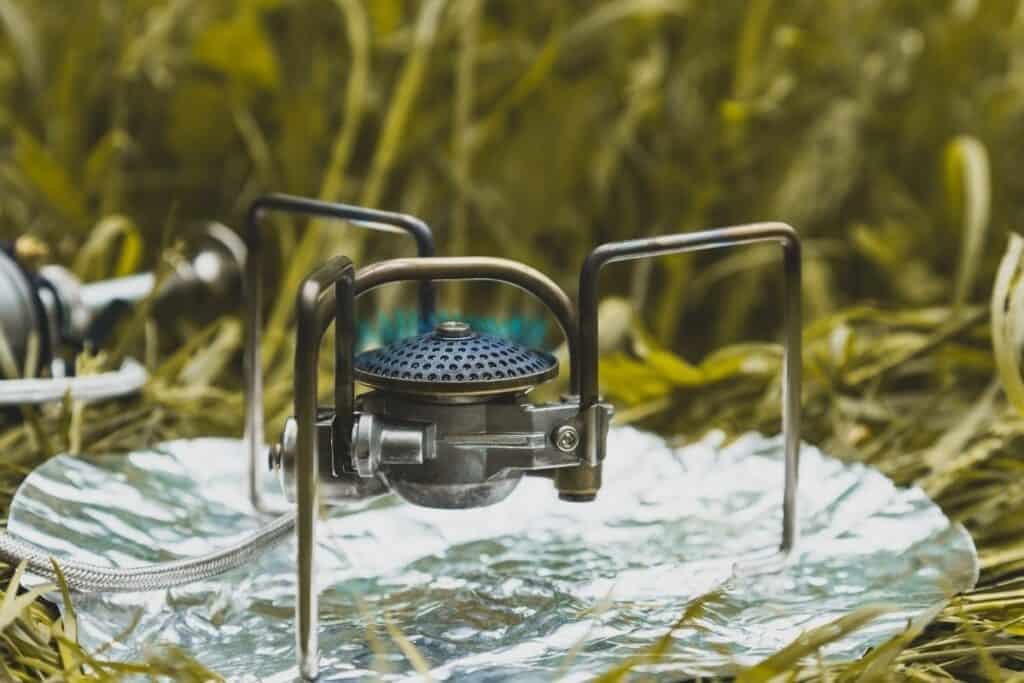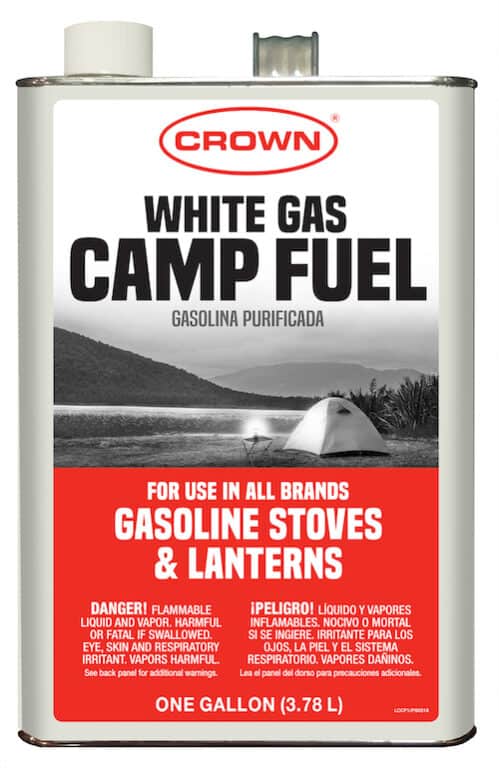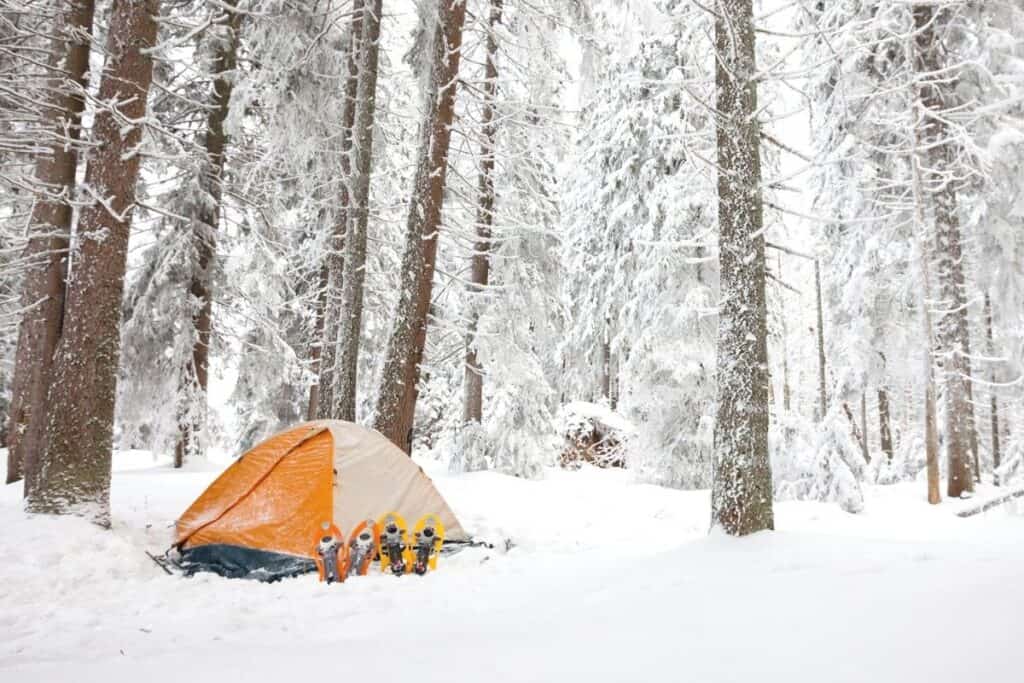
The big day is fast approaching. In a very short time, you’ll be out in the woods doing what you love – hiking! You’ve got your supplies together- food, water, kerosene heater, and all- but you suddenly realize you’ve bought kerosine fuel instead of camp fuel! But isn’t camp fuel the same as kerosene? Can you use them interchangeably?
Camp fuel is not the same as kerosene and should not be used interchangeably as a fuel source. Doing so could lead to an equipment malfunction, and ultimately a fire or explosion.
While the two may sound similar, it’s important to make sure that you don’t mix them up! This article will examine the difference between camp fuel and kerosene and why you can’t use them interchangeably.

What is Camping Fuel?
Camping fuel, also known as white gas or naphtha, is a distilled liquid petroleum fuel that includes no additives. It’s highly efficient clean-burning nature make it a good fuel choice for camping.
One molecule of camping fuel contains 5 to 9 carbon atoms, meaning that it stores massive amounts of energy in minimal space. Campers find that camp fuel is a long-lasting way to keep themselves heated while on the trail.
Coleman and MSR are common white gas manufacturers, and hikers can use their white gas in such popular products as camp stoves and heaters to significant effect.
Can You Use Camp Fuel in a Kerosene Heater?
The short answer is – no.
Camping fuel is not the same as kerosene. If you have a heater marked for use with kerosene fuel, it’s not recommend that you try using camp fuel in it. Doing so could result in safety hazards such as a fire or explosion.
The most significant danger here is improper ignition, which occurs when the wrong fuel is used in a camp heater. Because camp fuels are so flammable, it’s best to check your manufacturer’s recommendations and use only the listed fuel.
That said, there do exist some white gas heaters – but they’re not all that common.
White gas is a very old form of fuel, dating all the way back to the 1950s. Back then, white gas camp heaters were relatively common and were used for ice fishing and other cold-weather activities.
These camp heaters were big, heavy things that looked a lot like something out of a sci-fi movie. If you can find one, you’d probably find it of very little use. If you appreciate the retro aesthetic, though, go for it!
All in all, you should only use the kind of fuel recommended by the manufacturer of your camp heater. Kerosene heaters should only use kerosene. Violating this rule can cause serious accidents.
What Makes Camping Fuel So Good?
Camping fuel has three significant advantages: a bright burn, quick ignition, and superior purity. Camping fuel just can’t be matched by other fuel forms in terms of these three factors.
Camping fuel burns extremely bright, meaning that its a great fit for lantern use. If you don’t like lugging around batteries that might get wet and malfunction, a white gas lantern might be the best fit for you.
Additionally, camping fuel lights quickly! If you’ve ever struggled to light a fire or found that your firestarter just wasn’t cutting it, you might consider putting a spritz of camp fuel on unburned tinder.
Camp fuel’s quick ignition time means that it can be an adequate helper in getting a campfire started and burning well. Just be careful, don’t put too much on, and never pour camp fuel on an already burning fire. This could cause serious injury.
Finally, camping fuel has excellent purity, meaning that no poisonous chemicals are added to the mixture. This reduces a camper’s risk of long-term health problems and keeps the environment cleaner.
Can You Use a Kerosene Heater Inside a Tent?
While you may not be able to take a kerosene heater on a long hike, you might want it for a more controlled camping environment – say, a campground or your backyard.
But can you use a kerosene heater inside of a tent? Is there a risk of suffocation due to carbon monoxide? How can you prevent accidents when using a camp heater?
As long as you keep your tent adequately ventilated, you should be able to use your kerosene heater inside of a tent. Just make sure you aren’t locked in there with the burn’s byproducts, as this could lead to severe injury or death.
Burning kerosene produces several chemicals – some relatively docile, some more harmful. These chemicals are sulfur dioxide, nitrogen dioxide, carbon dioxide, carbon monoxide, and some other gasses. The one we want to focus on is carbon monoxide.
Carbon monoxide is the reason people suffocate when trapped in a confined space with a running car. If there is too much carbon monoxide in the air you’re breathing, you risk not getting enough oxygen, which is deadly.
If you’re burning something in a confined space, make sure you have adequate ventilation to cycle carbon monoxide out and oxygen in.

Other Ways to Heat a Tent
If camping fuel’s all you’ve got and you need an alternative, or if you’re not comfortable with the idea of burning something in a confined space, consider these ways to keep yourself warm on a winter camping trip.
Hot Tents
Hot tents are a great way to keep warm in the winter because they come special-made with a heat source built-in. To see videos of hot tents in action, look up ‘hot tent’ on youtube. Otherwise, read on.
The idea behind a hot tent is to find a way to burn a fire inside of a tent. This deletes the need for bulky camping fuel tins and can produce a much cozier, lighter tent environment. Camp tents light and warm themselves using only natural fuel sources.
Camp tents come outfitted with a ventilation flap, a chimney hole, and a collapsible stove and flue-pipe. Assembly is quick and easy with practice, and these tents are a cozy, warm way to camp.
However, camp stoves have to be made of metal, and thus, whatever weight a hot tent takes away, it doubles or triples. Hot tents are often hauled on camping rickshaws or sleds.
These tents are an excellent option for extended stay camping. Along with their heating advantages, stoves for hot tents can also be used to boil water, heat food, and light your tent. For serious campers, hot tents are a spectacular product.
Electric Heaters
Electric heaters are a great, safe way to keep your tent warm at night or on a cold day. Just remember to keep them away from water if they’re not waterproof.
Electric heaters have an advantage over gas heaters because you don’t have to worry about carbon monoxide. Electric heaters have no chemical byproducts other than heat and can thus be used in a tent without fear of suffocation.
While these heaters are safe in terms of chemical byproducts, there are a few things you should keep in mind. One, never take the cover off your heater. Exposing the heating coils could start a fire if your camp heater tips over and touches your sleeping bag or clothing.
To state the obvious, being inside a burning sleeping bag would be somewhat unpleasant.
Also, keep in mind that electric heaters have to be charged somehow. Whether you’ve found a rechargeable camp heater or are using a battery-powered model, you’re going to have to worry about powering up your heater.
Carrying big batteries around can add some serious weight to your backpack, so keep this in mind when making your pack-list.
Hand Warmers and Insulated Clothing
A more obvious, much lighter-weight strategy would be. To wear warm, insulated clothing and use hand warmers. While they may not heat your whole tent, these options will heat what matters inside of your tent- you.
Wearing multiple layers on cold nights and packing a sub-zero sleeping bag can help you keep warm on the coldest of nights. Make sure to wear warm socks and gloves- keeping your extremities warm is imperative when cold-weather camping.
Speaking of the extremities, hand warmers can be used to keep your hands and feet comfortable in winter weather. They’re lightweight, practical, and you can buy them at most any camping supply store or online.
Combining all of these insulation options can keep you from freezing to death in the winter without adding lots of weight to your overall carry. You should always stay insulated and have extra layers of clothing on long, cold hikes.
All in All
All in all, you should never use camping fuel in a kerosene heater, as it could cause serious injuries or death. Camping fuel is white gas, which is not the same as kerosene. Using improper gas could lead to fires or explosions.
White gas heaters exist, but they’re uncommon. If you’re uncomfortable burning a kerosene heater inside your tent, consider the listed alternatives for keeping warm in cold weather.
Related Posts
If you found this article helpful, then make sure to take a look at the related posts below as well!
